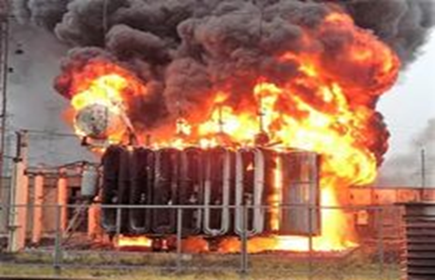Causes of Transformer Failure
Most of the time, your transformer may seem like an inert apparatus tucked away in a cabinet. However, when energized, it is a vibrant, living thing, transforming and feeding electrical power at 60 Hertz to your facility. In addition to the metal windings and core, it contains organic materials in the form of insulation. However, like all living things, transformers age over time […]
Read MoreThe Cost of Transformer Failure in Manufacturing
Recent surveys have reported the cost of a single hour of manufacturing downtime to be anywhere between $500,000 and $5 million. The survey participants were very large, high-volume manufacturers in automated industries such as automotive, steel, chemical and pharmaceuticals. The estimates of hourly downtime costs were reported by respondents to the surveys without definitions, supporting details […]
Read MoreDepartment of Energy Testing Procedures for Transformers
Transformers are critical pieces of equipment for supplying energy to public and private buildings, from manufacturing facilities to universities and hospitals. These systems must work correctly to transform and feed electrical energy into buildings to power daily operations. Besides working correctly and safely, transformers must also use energy efficiently. Since its founding in 1977, the U.S. […]
Read MoreAverage Lead Times of Padmount Transformers in 2025
Supply chain challenges have resulted in widespread disruptions since mission-critical processes rely on delayed materials sourcing and manufacturing procedures. Padmount transformers are among these critical systems that often face long lead times for new units. When your existing system stops functioning, these lead times can set your operation back. Understanding lead times for 2025 can […]
Read MoreQuantifying Downtime Costs and The Hidden Impact of Transformer Failures
For fast-paced commercial and industrial operations, a transformer failure can be more than just an inconvenience — it can lead to a significant loss of revenue. As production halts and employees stand idle, the actual cost of downtime begins to unfold, revealing hidden expenses that can significantly impact operations. Understanding and quantifying downtime costs associated […]
Read MoreGuide to Transformer Failures
Transformers serve a crucial purpose as part of the power system for many facilities. Therefore, when signs of failure appear, you must quickly replace or repair the transformer to restore full operation. Knowing how to tell if your dry type will stop working or how to detect failures in an oil filled transformer will help […]
Read MoreDissolved Gas Analysis Limits
Awareness of dissolved gas analysis limits lets you detect minor faults and conditions that can lead to transformer failure. DGAs reduce risk to the unit, system and the personnel who monitor the transformer. You must do a DGA for transformers after high voltage and temperature rise tests, during a commissioning period, before a lapsed warranty […]
Read MoreHow to Select the Ideal Transformer for Your Company
Many businesses only function efficiently because of transformers. This critical equipment performs a fundamental function in many industries, transferring power and controlling voltages to ensure safe and productive workflows. If your business relies on electricity, you know how damaging a blown transformer can be to your operations. Choosing a transformer can be tricky, but with […]
Read MoreDOE Efficiency Standards for Transformers
Jump To: What Are the DOE Efficiency Standards? Benefits of Efficiency Standards to the Customer and the Industry How to Comply With Efficiency Standards Impacts of DOE Regulations and Compliant Transformers Transformers Exempt From DOE Efficiency Standards The Future of DOE Efficiency Standards More than 40% of the energy used in the United States is consumed by […]
Read MoreGuide to Transformer kVA Ratings — How to Determine What Size Transformer You Need
In many industries, including health care, manufacturing, electrical contracting, higher education and corrections, reliable, high-quality transformers are essential for keeping operations running efficiently. Large facilities and industrial processes require substantial amounts of power, and they need dependable transformers to convert the energy coming from the power plant into a form they can use for their […]
Read More









